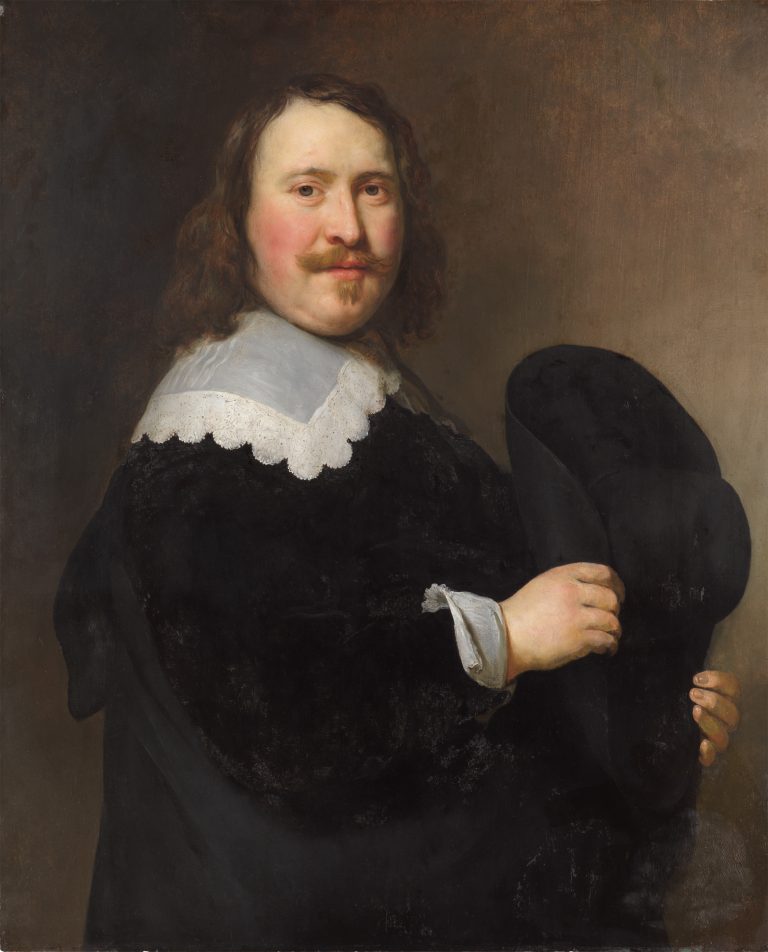In this distinguished half-length portrait, Govaert Flinck has depicted a well-dressed, elegant gentleman clasping a broad-brimmed black hat before his chest.1 Exuding an unassuming confidence, he stands turned to the right in a three-quarter pose as he directs a steady gaze toward the viewer. His sober, black costume is accented by a wide, white lace collar and sleeve cuffs that gently fold at his wrists. He has shoulder-length brown hair, a goatee and a thick moustache that curves slightly upward. Wrinkles beneath his eyes and a thinning hairline reveal the sitter’s middle age, while his plump face and rotund body suggest a comfortably lived life. By rendering the figure with flushed cheeks and slightly parted lips, Flinck achieved a sense of immediacy in this otherwise reserved and formal portrait.
Flinck turned to Rembrandt van Rijn’s (1606–69) Portrait of a Man Holding His Hat (fig 1) from ca. 1639 as the compositional model for the Leiden Collection painting. He followed the same half-length format and similarly posed his sitter looking at the viewer while holding his hat with both hands.2 Although Flinck’s sitter is more modestly dressed than Rembrandt’s wealthy—and likely foreign—gentleman, he also wears a lace-trimmed white linen collar and cuffs, which Flinck suggestively rendered with controlled yet loose brushwork.3 Flinck similarly situated his sitter against a bare plaster wall which, as in Rembrandt’s painting, has a faint crack helping to define its position in space.4 Subtle differences, however, exist between Rembrandt’s and Flinck’s portraits. Rembrandt’s gentleman has a slight forward thrust to his body which, combined with the shimmering fabric of his jacket and the pronounced chiaroscuro effects the master used to model his form, creates a subtle sense of movement to the image. Flinck’s gentleman stands quite comfortably where he is, seemingly in no hurry to change his position or to don the wide-brimmed black hat that he holds so firmly in his hands.5
This portrait type was popular in Amsterdam in the middle decades of the seventeenth century. Flinck repeated this compositional model in his Portrait of a Man from 1645 in Bonn, but situated the figure beneath a classicizing arch and an open, blue sky, revealed by a curtain which has been pulled aside.6 Gerard ter Borch (1617–81) also adapted this figure’s pose in his Portrait of a Gentleman (fig 2) from ca. 1652–53. In this work, Ter Borch similarly depicted a sober, sensitively rendered image of a wealthy Amsterdam burgher turned to the right and carrying a large black hat.7 Although none of the identities of these sitters is known, one can deduce from their distinguished air that they all belonged to the upper echelon of Amsterdam society.
